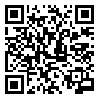BibTeX | RIS | EndNote | Medlars | ProCite | Reference Manager | RefWorks
Send citation to:
URL: http://jrdms.dentaliau.ac.ir/article-1-89-fa.html
Background and Aim: Cone beam computed tomography (CBCT) produces high-quality data in periodontal diagnosis and treatment planning. The aim of this study was to compare the accuracy of CBCT with intraoral digital and conventional radiography in the measurement of periodontal bone defects.
Methods and Materials: In this diagnostic research, two hundred and eighteen artificial osseous defects (buccal and lingual infra-bony, inter proximal, horizontal, crater, dehiscence and fenestration defects) were shaped in 13 dry mandibles. CBCT and intraoral radiography with parallel technique by conventional film and digital sensor were compared with the standard reference (digital caliper). Inter and intra observer agreement were assessed using Intra class correlation co-efficient and Pearson correlation. Paired T-Test was applied for the comparison of absolute differences of conventional and digital intraoral radiography and CBCT measurements with the gold standard. All statistical analyses were performed using SPSS® v13.0 statistical software.
Results: Inter and intra observer agreement were both high for CBCT (ICC: α=0/88) but moderate for intraoral conventional radiography (ICC: α=0/54) and digital radiography (ICC: α=0/73). No significant differences were detected between the observers for all the techniques (P> 0.05). According to Paired T-test, mean difference for CBCT technique (0.01mm) was lower than digital radiography (0.47mm) and conventional radiography (0.63mm). CBCT allowed the measurement of all lesion types, but intraoral radiography did not allow the measurement of buccal and lingual defects.
Conclusion: The results of this study showed that the studied radiographic modalities are useful in identifying the periodontal bone defects. CBCT technique showed the highest accuracy in the measurement of periodontal bone defects compared with digital and conventional intraoral radiography.
| بازنشر اطلاعات | |
 |
این مقاله تحت شرایط Creative Commons Attribution-NonCommercial 4.0 International License قابل بازنشر است. |



